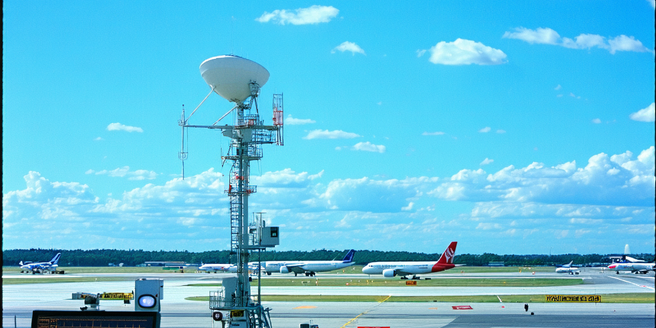
Introduction to Wind Monitoring Technologies in Aviation
Wind monitoring technologies have long been essential in aviation, offering crucial data for safe and efficient operations. With technological advancements, modern airports leverage sophisticated wind sensors to monitor conditions in real time. The integration of ground-based radar, anemometers, and LiDAR systems enables precise tracking of wind speed and direction at various altitudes. This advancement has revolutionized how flight safety protocols are developed. These innovations not only enhance current operations but also lay the groundwork for future advancements in aviation safety. These technologies facilitate improved decision-making for pilots and air traffic controllers, minimizing risks associated with wind shear and turbulence. As aviation continues to evolve, the role of wind monitoring is ever more important, offering insights that are vital for both operational efficiency and passenger safety.
The Importance of Accurate Wind Data for Airport Operations
Accurate wind data is a cornerstone of effective airport operations. It aids in determining runway usage, planning flight paths, and ensuring timely takeoffs and landings. Understanding real-time wind conditions allows airport staff to make swift decisions in dynamic situations. Wind patterns can change rapidly, affecting aircraft performance and safety. Therefore, constant monitoring and adjustment are essential to maintain operational efficiency. Hence, airports employ advanced sensing technologies to gather precise wind information. This data is crucial not just for flight safety but also for fuel efficiency, as it helps pilots optimize flight routes and reduce fuel consumption. By employing accurate wind data, airports can minimize delays and enhance both passenger safety and comfort.
How Wind Sensors Work: An Overview of Key Technologies
Wind sensors are pivotal in gathering comprehensive wind data used in aviation. These devices play a crucial role in monitoring environmental conditions. They are integral to ensuring that flights can operate safely under varying weather conditions. The technology primarily involves anemometers, which measure wind speed, and wind vanes, which determine wind direction. More advanced methods, such as Doppler radar and LiDAR, offer detailed insights by measuring wind shear and turbulence at different altitudes. These technologies work by sending out beams of energy and analyzing the feedback from particles in the air. The data collected feeds directly into airport systems, where it assists in real-time decision-making processes essential for flight safety and efficiency.
Case Studies: Successful Implementation of Wind Monitoring Systems
Several international airports have successfully implemented advanced wind monitoring systems, showcasing the importance of wind data. For instance, Narita International Airport in Japan employs a mix of LiDAR and Doppler radar systems, which have significantly reduced wind-related disruptions. Such innovations have set a new standard for airport safety and efficiency. Furthermore, the continuous improvement of these systems indicates a promising future for aviation technology. In addition to reducing delays, these systems contribute to lower operational costs by optimizing fuel consumption. Similarly, Schiphol Airport in Amsterdam integrates sophisticated sensors that provide a comprehensive overview of wind conditions, aiding in efficient runway use. These case studies underline the value of implementing cutting-edge technology in enhancing reliability and operational efficiency while prioritizing safety.
Future Developments: Innovations in Wind Monitoring for Aviation
The future of wind monitoring in aviation promises exciting developments. Emerging technologies like machine learning algorithms are being integrated to analyze wind patterns with greater precision. Innovations in sensor technology aim to provide even more detailed and localized wind data, essential for urban airports with complex wind patterns. Additionally, collaborative efforts among global aviation stakeholders are enhancing the development and implementation of these new technologies. This collaboration helps to standardize practices across different regions. Moreover, renewable energy solutions are being explored to power these systems sustainably. As research progresses, the integration of such new technologies ensures that airports are better equipped to handle the dynamic nature of wind, enhancing safety and efficiency.
